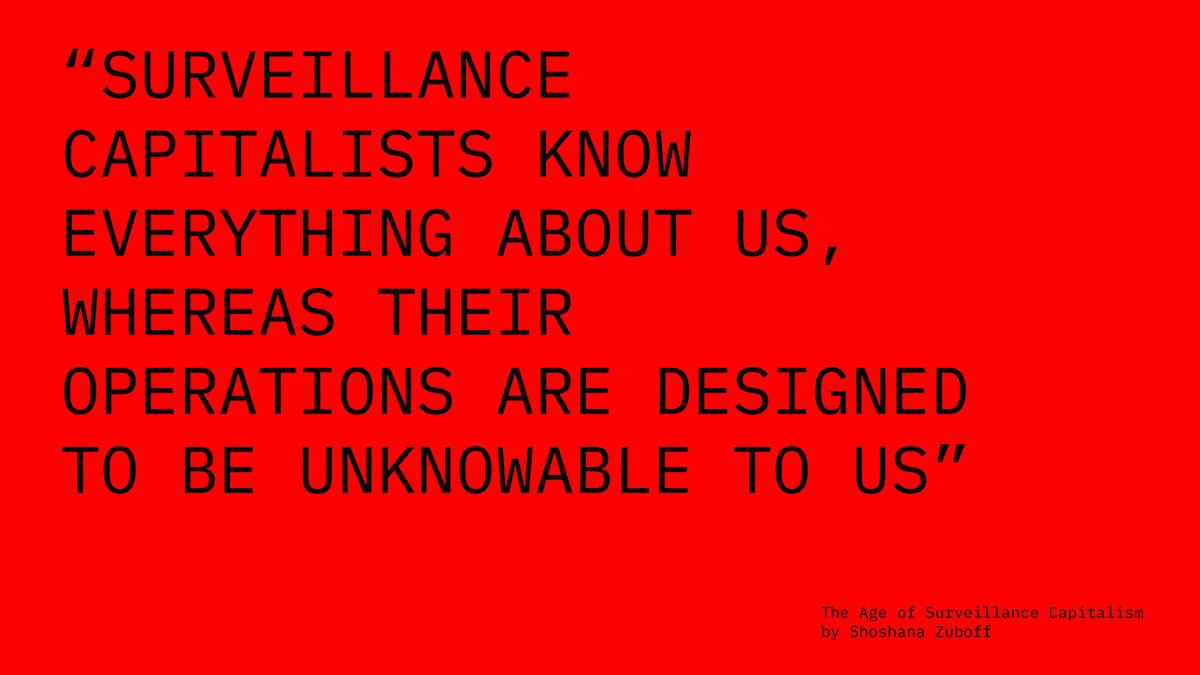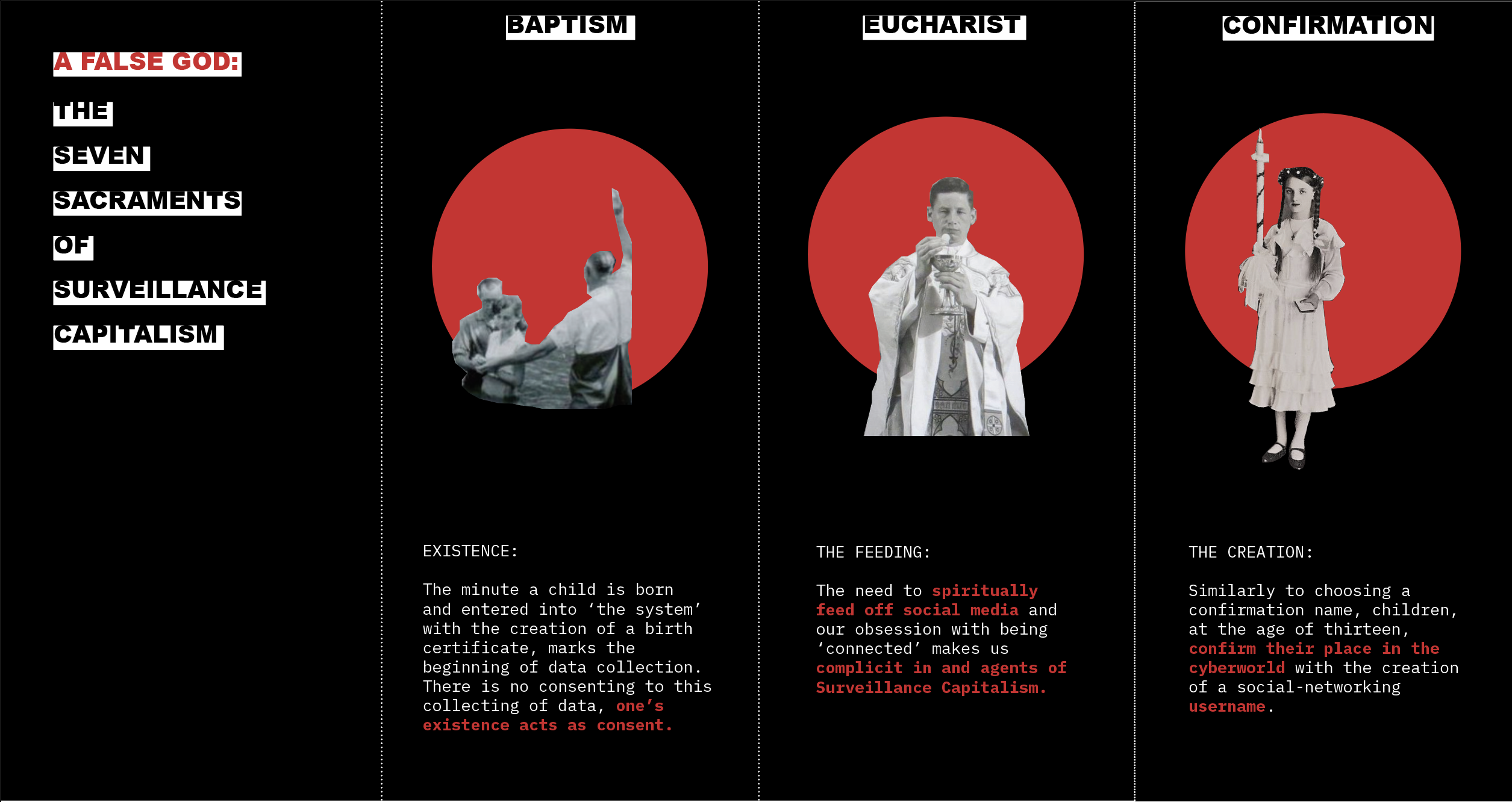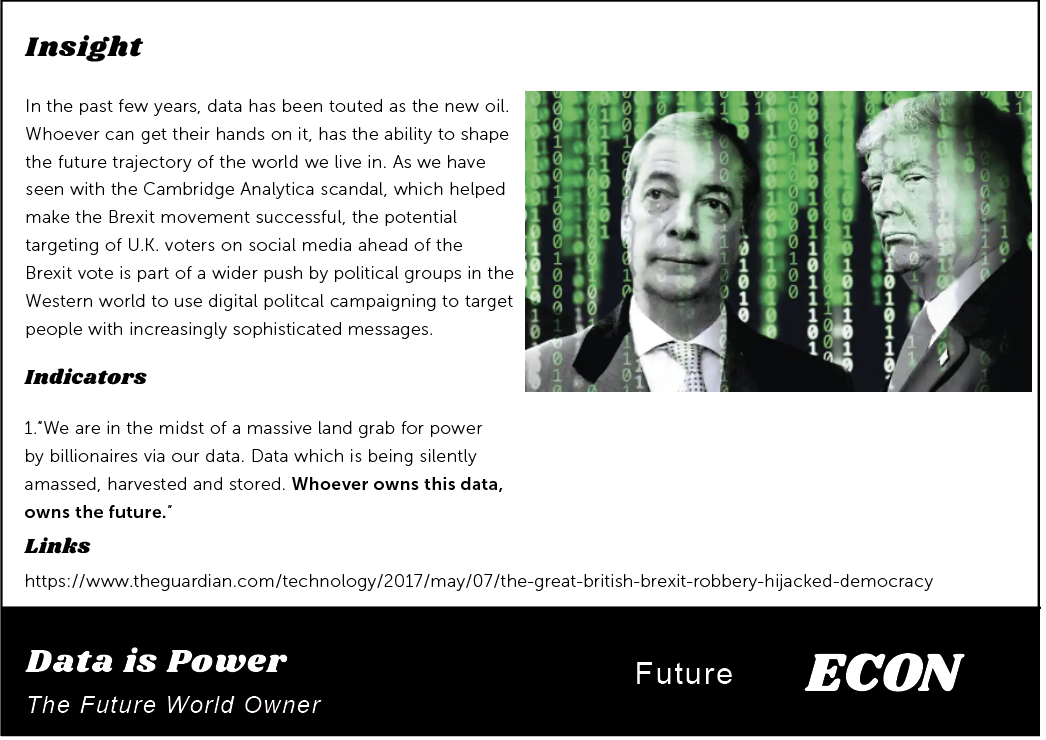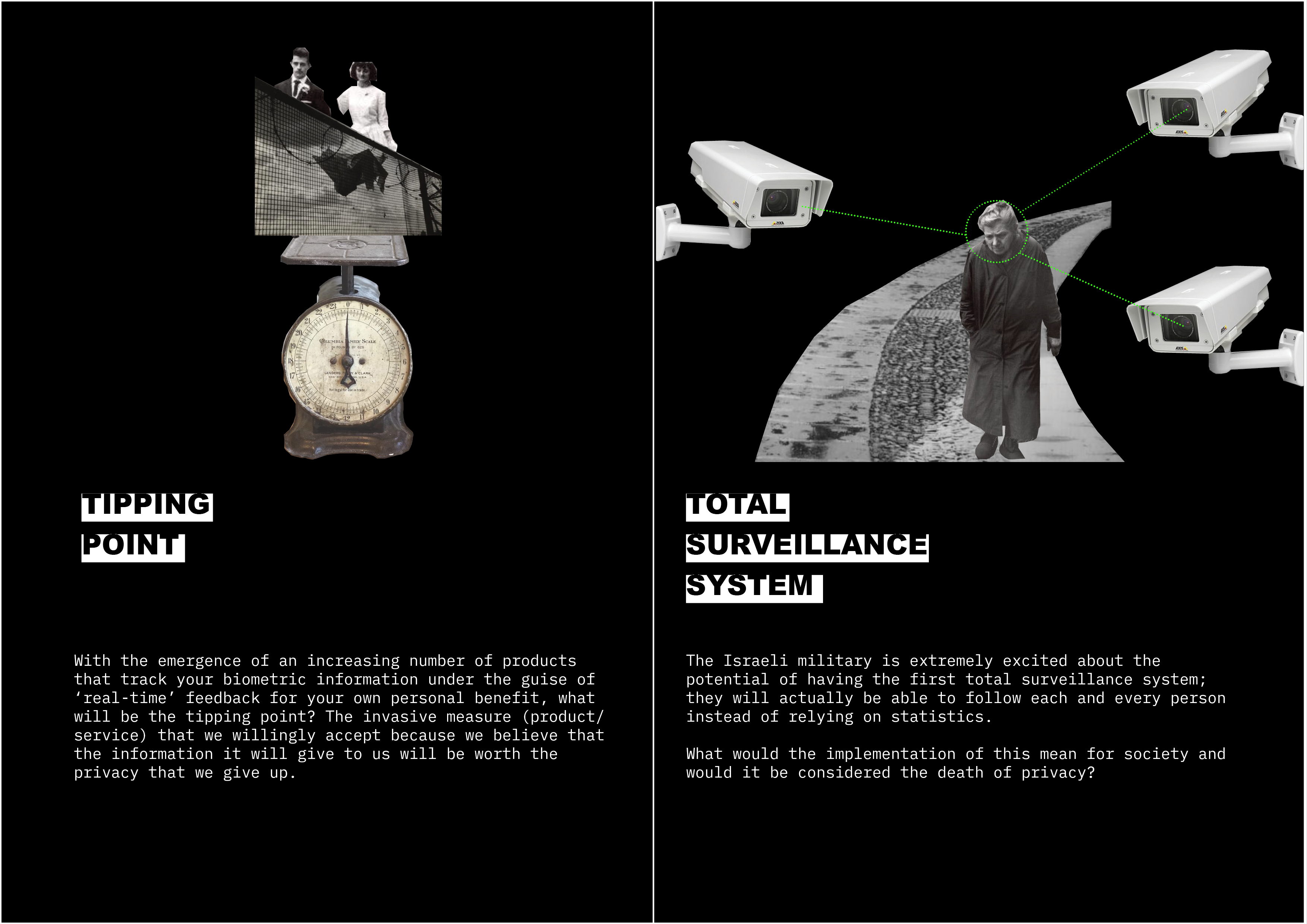
Video Still
In Google We Trust
︎︎︎
 From The Age of Surveillance Capitalism by Shoshana Zuboff
From The Age of Surveillance Capitalism by Shoshana ZuboffThe Second Sacrament of Surveillance Capitalism
Glasgow School of Art
BDes Product Design
Jan - April 2020
BDes Product Design
Jan - April 2020
In Google We Trust, is a seven-part animation project that questions our role as both the agents and victims of surveillance capitalism.
By drawing parallels to the Catholic religion and using the framework of the Seven Sacraments to visualise this ‘hidden’ societal structure in which we are largely complicit, In Google We Trust, shows how surveillance capitalism is an omniscient, elusive presence that knows everything about us and in the same way that some turn to God when they need answers, others turn to Google. The project suggests, on a societal level, that we are slavishly following the ‘religion’ that is surveillance capitalism and asks the viewer to consider her own relationship to the technology that surrounds her.
We live in a society in which Big Tech know everything about us, from our internet searches to the size of our houses. These companies are able to paint a detailed picture of who we are, using data that we do not even know they have access to. This data is, in turn, used to engineer our behaviour towards a predetermined future like we have previously seen with the Cambridge Analytica scandal that contributed to the rise of Trump and Brexit.
By drawing parallels to the Catholic religion and using the framework of the Seven Sacraments to visualise this ‘hidden’ societal structure in which we are largely complicit, In Google We Trust, shows how surveillance capitalism is an omniscient, elusive presence that knows everything about us and in the same way that some turn to God when they need answers, others turn to Google. The project suggests, on a societal level, that we are slavishly following the ‘religion’ that is surveillance capitalism and asks the viewer to consider her own relationship to the technology that surrounds her.
We live in a society in which Big Tech know everything about us, from our internet searches to the size of our houses. These companies are able to paint a detailed picture of who we are, using data that we do not even know they have access to. This data is, in turn, used to engineer our behaviour towards a predetermined future like we have previously seen with the Cambridge Analytica scandal that contributed to the rise of Trump and Brexit.


The Analogy: drawing parallels between surveillance capitalism and the Seven Sacraments
Development
︎︎︎



Initial Research + Key Research Cards
 Identifying Possible Users
Identifying Possible Users

 Presenting my developments
Presenting my developments The Second Sacrament
The Second SacramentThe Brief
In Google We Trust is the name of my Product Design graduation project. For the first time, I was able to write my own brief. I initially began the project with the following research question: in the wake of Brexit, how does it affect what it means to be a British Citizen? As I began to research the social, technological, environmental and political aspects of Brexit, I realised I had a greater interest in the way in which conservative movements like Brexit persuade people to vote for them. This specific interest moved the overall project focus away from Brexit and into Surveillance Capitalism.
Initial Research
I began by creating STEEVPLE cards or research cards that investigate the social, technological, economic, ecological, values, political, legal and educational aspects of the chosen research area. These cards were essential in creating a foundational layer of knowledge for the project I was about to undertake. The research cards also help to specificy what areas to focus on and help to discover where design opportunities might arise. It was through making the research cards, that I became interested in the area of Surveillance Capitalism and its opacity, prompting me to shift the focus of the project.
I was specifically interested in the increasing value of data and data collection and how whoever owns this data essentially owns the future. I found this concept terrifying, while also knowing that it was information that was largely suppressed. It was at this point that I identified a design opportunity that was about how to communicate this largely hidden power-structure that runs society to people who know nothing about it.
Identifying a User
After my initial research, I knew I had to identify a user, as it would help to narrow down my design opportunities. I initially identified five different potential users that I was interested in designing for. The users ranged from those who were paranoid about their data-collection to those who were so disengaged that they were unaware of the power of data. Eventually I chose the ‘data-ignorant’ or those who know there is cause for concern with regard to the way their data is being collected, but they do not care enough to change their social media/tech habits. I recognised that there was a large window to work with and that it was about convincing people of the danger of giving up their personal data.
Design Opportunities
Based on the research and the user I identified, I developed four design opportunities. The first was called Tipping Point and it considered the increasing dependency on and use of biometric products. It asked what the future invasive measure, we willingly accept because we believe the information we will gain is worth the privacy we give up, will be. The second design opportunity was Total Surveillance System which considered how the Israeli state is on the brink of being the first territory to have a total surveillance system. This opportunity speculates on the implication of a surveillance system in which each and everyone person can be followed and have their data collected. The third opportunity was The Next Cambridge Analytica and asks what the next scandal will be and the implications of it on society. Finally, the fourth design opportunity and the one I selected to take forward was entitled An Analogous Situation in which my task as a designer was to develop a method of communicating, in understandable terms, the effects of surveillance capitalism to the data-ignorant.
Finding the Analogy
I then focused my efforts on finding an analogy that conceptually made sense and was one that people could easily understand. I spent some time brainstorming, before eventually landing on the Seven Sacraments. I recognised that there were many parallels to be drawn between the way surveillance capitalism functions and the Seven Sacraments. In the same way that the Seven Sacraments chart a person’s life from the moment they are born to beyond the grave, Surveillance Capitalism follows a person’s life, step-by-step, tracking their daily actions. Furthermore, I believed there was an argument to be made that in the same way, God is considered an omniscient presence, all seeing and all knowing, Surveillance Capitalism exists in a similar capacity. After determing that I could indeed, make this comparison, I got started on the final execution.
Making the Project
I began by making a plan for myself, mapping out the Seven Sacraments of Surveillance Capitalism. I knew I wanted to turn this project into an animation based project as a way to bring to life the surrealistic scenes I was imagining. Furthermore, I felt using a technology-based aesthetic spoke to the core of the project and it’s investigation of Surveillance Capitalism.
It was my first time working with any kind of 3D modeling and animating software. It was a steep learning curve, but something I had wanted to teach myself for quite a while. The steps that I took during this project to execute my final vision, have stuck with me over the years, as I have continually referred back to working in Blender and increasing my skillset as a 3D animator.
Futures Glasgow
After I had finished making the project, I was invited by Futures Glasgow to present my work to a group of other designers and those interested in futures design in Scotland. It was a great experience to showcase my work to those who had never seen it before and engage in conversation about what the future of design should look like
In Google We Trust is the name of my Product Design graduation project. For the first time, I was able to write my own brief. I initially began the project with the following research question: in the wake of Brexit, how does it affect what it means to be a British Citizen? As I began to research the social, technological, environmental and political aspects of Brexit, I realised I had a greater interest in the way in which conservative movements like Brexit persuade people to vote for them. This specific interest moved the overall project focus away from Brexit and into Surveillance Capitalism.
Initial Research
I began by creating STEEVPLE cards or research cards that investigate the social, technological, economic, ecological, values, political, legal and educational aspects of the chosen research area. These cards were essential in creating a foundational layer of knowledge for the project I was about to undertake. The research cards also help to specificy what areas to focus on and help to discover where design opportunities might arise. It was through making the research cards, that I became interested in the area of Surveillance Capitalism and its opacity, prompting me to shift the focus of the project.
I was specifically interested in the increasing value of data and data collection and how whoever owns this data essentially owns the future. I found this concept terrifying, while also knowing that it was information that was largely suppressed. It was at this point that I identified a design opportunity that was about how to communicate this largely hidden power-structure that runs society to people who know nothing about it.
Identifying a User
After my initial research, I knew I had to identify a user, as it would help to narrow down my design opportunities. I initially identified five different potential users that I was interested in designing for. The users ranged from those who were paranoid about their data-collection to those who were so disengaged that they were unaware of the power of data. Eventually I chose the ‘data-ignorant’ or those who know there is cause for concern with regard to the way their data is being collected, but they do not care enough to change their social media/tech habits. I recognised that there was a large window to work with and that it was about convincing people of the danger of giving up their personal data.
Design Opportunities
Based on the research and the user I identified, I developed four design opportunities. The first was called Tipping Point and it considered the increasing dependency on and use of biometric products. It asked what the future invasive measure, we willingly accept because we believe the information we will gain is worth the privacy we give up, will be. The second design opportunity was Total Surveillance System which considered how the Israeli state is on the brink of being the first territory to have a total surveillance system. This opportunity speculates on the implication of a surveillance system in which each and everyone person can be followed and have their data collected. The third opportunity was The Next Cambridge Analytica and asks what the next scandal will be and the implications of it on society. Finally, the fourth design opportunity and the one I selected to take forward was entitled An Analogous Situation in which my task as a designer was to develop a method of communicating, in understandable terms, the effects of surveillance capitalism to the data-ignorant.
Finding the Analogy
I then focused my efforts on finding an analogy that conceptually made sense and was one that people could easily understand. I spent some time brainstorming, before eventually landing on the Seven Sacraments. I recognised that there were many parallels to be drawn between the way surveillance capitalism functions and the Seven Sacraments. In the same way that the Seven Sacraments chart a person’s life from the moment they are born to beyond the grave, Surveillance Capitalism follows a person’s life, step-by-step, tracking their daily actions. Furthermore, I believed there was an argument to be made that in the same way, God is considered an omniscient presence, all seeing and all knowing, Surveillance Capitalism exists in a similar capacity. After determing that I could indeed, make this comparison, I got started on the final execution.
Making the Project
I began by making a plan for myself, mapping out the Seven Sacraments of Surveillance Capitalism. I knew I wanted to turn this project into an animation based project as a way to bring to life the surrealistic scenes I was imagining. Furthermore, I felt using a technology-based aesthetic spoke to the core of the project and it’s investigation of Surveillance Capitalism.
It was my first time working with any kind of 3D modeling and animating software. It was a steep learning curve, but something I had wanted to teach myself for quite a while. The steps that I took during this project to execute my final vision, have stuck with me over the years, as I have continually referred back to working in Blender and increasing my skillset as a 3D animator.
Futures Glasgow
After I had finished making the project, I was invited by Futures Glasgow to present my work to a group of other designers and those interested in futures design in Scotland. It was a great experience to showcase my work to those who had never seen it before and engage in conversation about what the future of design should look like